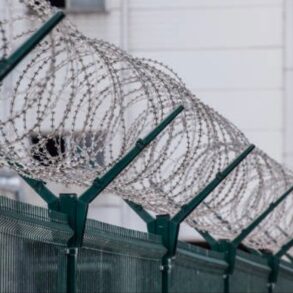Prisons across the nation expose incarcerated individuals to environmental hazards such as air pollution and extreme heat, and one Massachusetts Institute of Technology scholar is advocating for major reform.
What’s happening?
Ufuoma Ovienmhada is a doctoral student at MIT who has devoted her research to studying injustices in prisons across the country. In an op-ed for Environmental Health News, she summarized her findings and why she supports creating a new justice system.
During her research, Ovienmhada found that many prisons, jails and detention centers are situated near industrial activity, toxic waste facilities, and places where wildfires are common, exposing incarcerated individuals and staff to environmental hazards such as air pollution.
She recalled speaking with one woman who had been incarcerated in a prison that is situated near 15 facilities on the EPA’s Toxic Release Inventory.
“We were right across the street — literally — right across the street from a power plant that was just belching this sulfurous smelling stuff. I don’t know what it was. And I know that I have asthma. And that was really aggravated there,” she said. “There were times when we just couldn’t go outside … because it wasn’t just the smell you’d breathe in — it was like your lungs would … hurt.”
Meanwhile, outdated buildings often expose incarcerated individuals to extreme heat, Ovienmhada said, adding that funding for infrastructure updates is unlikely to make a difference. She cited interviews of formerly incarcerated people who said that such projects often were not completed.
Others described how such upgrades sometimes further exacerbated their poor treatment during incarceration. For instance, one person said ultra-cooled cells at one facility were used to punish individuals. “People actually died in those conditions,” the person told Ovienmhada.
Why are environmental hazards in prisons concerning?
Ovienmhada said people in prisons, jails, and detention centers can develop respiratory and cardiovascular diseases as a consequence of exposure to such environmental hazards.
“[This] can, quite literally, affect their ability to breathe, and even lead to premature death,” she stated. “The fact that environmental injustice is widespread in carceral facilities reveals that the suffocation of marginalized bodies in the U.S. behind bars is in many cases by design, not an accidental byproduct.”
This is just one example of the widespread environmental challenges across the United States. For instance, Cancer Alley is an approximately 85-mile strip of Louisiana that is home to around 200 dirty energy and petrochemical operations, according to Human Rights Watch. A scholar at Keele University concluded that Black communities living in Cancer Alley are more likely to have petrochemical plants nearby and called it a “prime example of environmental racism.”
What can be done to support people subject to environmental hazards?
Ovienmhada advocates for abolishing prisons as they’re currently set up and instead focusing on increasing investment in social infrastructure, though she acknowledges this may seem “idealistic” and suggests that “unrepentant or repeated harm-doers” should not have access to power that would allow them to continue their ways.
She shared an example of programs that are already working in this arena. For instance, Californians United for a Responsible Budget works to decarcerate, close prisons, and invest in programs that support workforce development, affordable housing, and drug treatment programs.
Across the country, people are also standing up for their communities. For example, sisters in one small town in Cancer Alley helped put a stop to the construction of a grain export facility that would have been built atop an area of cultural and historical significance. The construction would have also increased pollution, and dust from the plant could have caused respiratory problems.
Join our free newsletter for good news and useful tips, and don’t miss this cool list of easy ways to help yourself while helping the planet.
This post was originally published on this site be sure to check out more of their content.





